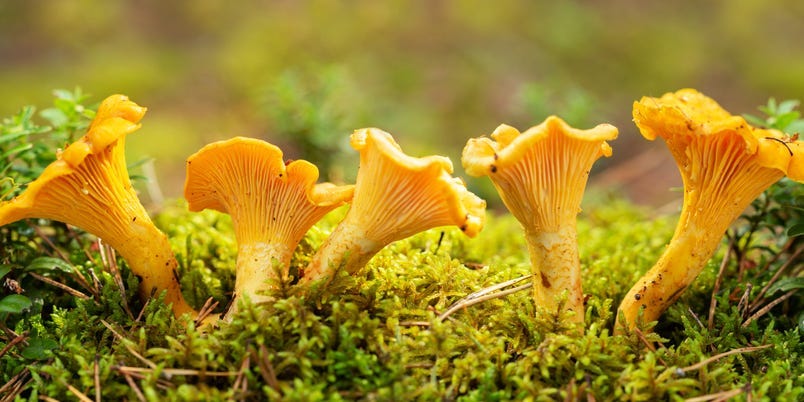
Nitr/Shutterstock
- Wild mushrooms are found in forests and fields when it's damp out or after it has rained.
- Common edible mushrooms include chicken of the woods, morels, chanterelles, and giant puffballs.
- Beginner foragers should invest in a guide and exercise caution when determining what is edible.
- Visit Insider's Home & Kitchen Reference library for more stories.
Although foraging may seem like something characteristic of a time long before grocery stores and restaurants, it's actually fairly common to this day. Recently, TikTok users and Michelin restaurants have opted to forage for herbs, berries, mushrooms, and other ingredients for their dishes. It may be gaining popularity in the mainstream, but foraging has long been practiced by various communities and individuals since the beginning of time.
"There are some very delicious and helpful foods that you can get in large quantity that are renewable," says "Wildman" Steve Brill, an environmental educator and author of six books on foraging, who often leads foraging tours in the New York area. "They are free and they're interesting."
Brill also has an app to help guide beginner foragers. He states berries are best when starting out, but that mushrooms are also fairly easy. With that being said, Brill and Indy Officinalis, an urban farmer and global forager, say it's important to heavily research and study wild foliage before ever putting it in your mouth.
"With any mushroom, make sure you have a full and proper ID and don't try to learn too many mushrooms at once or you have a better chance of kind of mixing them up," Officinalis says.
Tips for beginner foragers
- When it comes to picking the most fruitful spot for foraging, Brill says to seek out somewhere with many habitat varieties. "You want some open sunny areas, some edges, some fields, meadows, and woods," Brill says. And while certain types of forageable items only grow in certain places, the more habitat types the better your chance of finding a variety of edible plants.
- Bring the right tools and items. Brill says to have ways to store foraged items on hand, including plastic bags for vegetables and herbs, paper bags for mushrooms, and containers for berries. You also want to bring a plant and foliage guide to provide a source of information as you forage, a navigation device, and digging tools. Brill explains digging tools are especially necessary in the fall and early spring, when roots are in season.
- Start slow and take it easy. Like most things, foraging takes time, patience, and lots of learning. Before you begin picking items to eat and cook with, Brill encourages would-be foragers to "be careful with anything you put in your mouth" and to "learn one plant at a time, [and] learn it really well. Follow it throughout the seasons to make sure you know what it is." Brill states it's also a good idea to attend some foraging tours to help widen your knowledge.
When to forage for mushrooms
According to Brill, the best time to forage for mushrooms is right after a rainstorm, as mushrooms tend to come around when it's wet. If it's dry, you likely won't find many, if any at all.
Types of forageable mushrooms
There are a wealth of edible mushrooms that you might encounter while foraging, but Brill says it's best to start with the ones that are easiest to identify - chicken of the woods, morels, chanterelles, and puffballs.
Chicken of the woods (Laetiporus sulphureus)
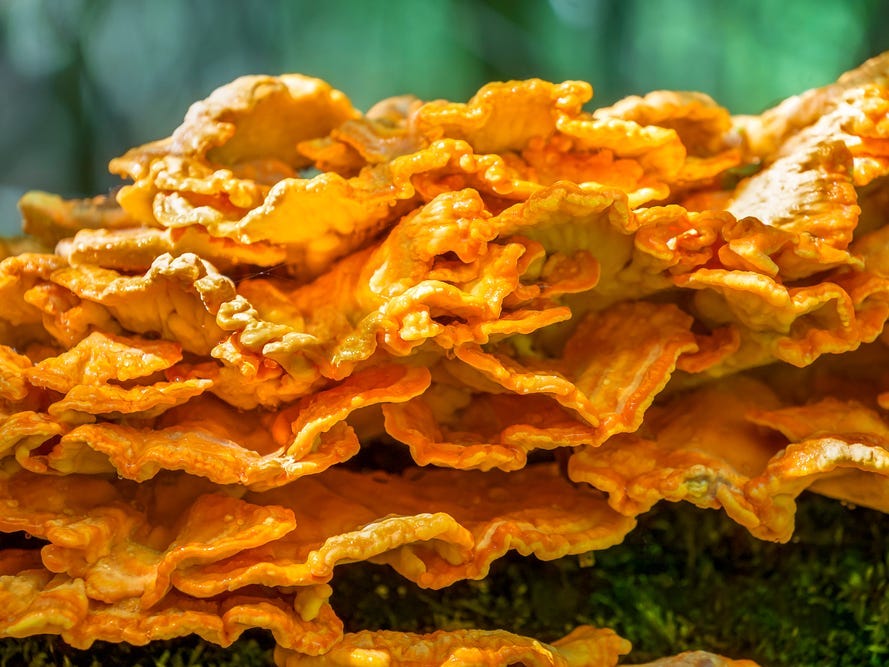
Ksenia Lada/Shutterstock
One of the largest and easiest mushrooms to recognize, you can often find chicken of the woods mushrooms growing on or in the crevices of decaying wood in a fan-like manner. As a shell fungus and polypore, they have a web of pores on the underside of the fruiting body as opposed to gills like some mushrooms. But one of their most distinguishing features is their color: a bright orange that Officinalis explains you can spot from a mile away. "They look as vibrant as an orange peel would," she says.
While these mushrooms appear most commonly on the East Coast in mid to late summer and early fall, Officinalis states another edible species known as the Laetiporus gilbertsonii grows on the West Coast on eucalyptus trees.
As their name implies, these mushrooms mimic the texture and taste of chicken meat. "They have this stringy, melt-in-your mouth flavor," Officinalis says. Brill states he especially likes them for sauteing, while Officinalis says you can also batter or deep fry them like actual chicken.
Morels (Genus Morchella)
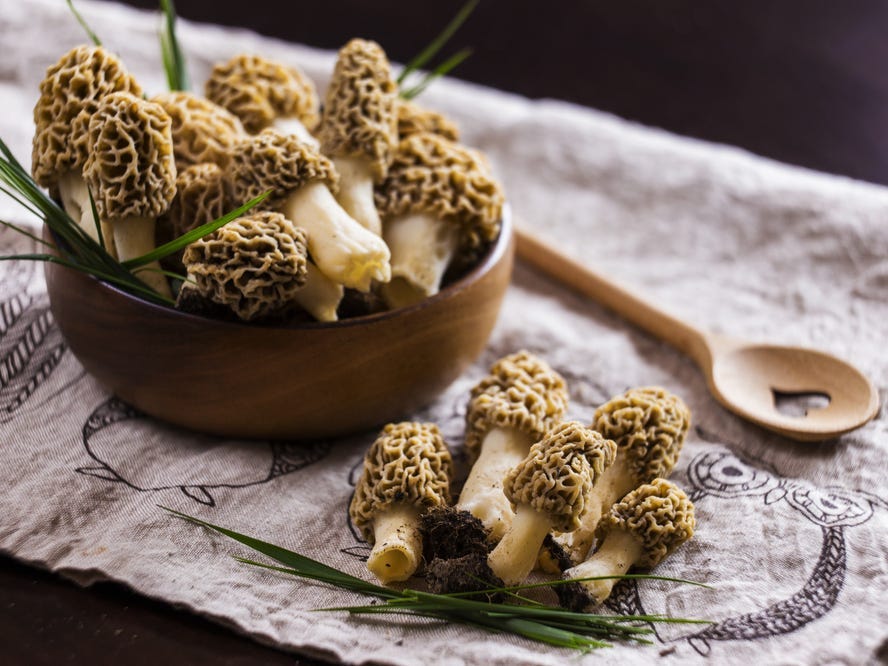
Mircea Costina/Shutterstock
Morels, most commonly found in the midwest, encompass a subfamily of mushrooms that tend to be a brown or lighter blonde color and are hollow from top to bottom. While the stems are smooth, their bodies, or the cap, feature honeycomb-looking pits, giving them a dimpled and wrinkled appearance.
According to Officinalis, morels taste a bit earthy and can absorb other flavors very well when cooked. But it's their "bouncy" texture that really makes them stand out to Officinalis. "There's just nothing quite like the texture of morel mushrooms," Officinalis says. "They have this elasticity and almost gummy nature."
Chanterelles (Genus Cantharellus)
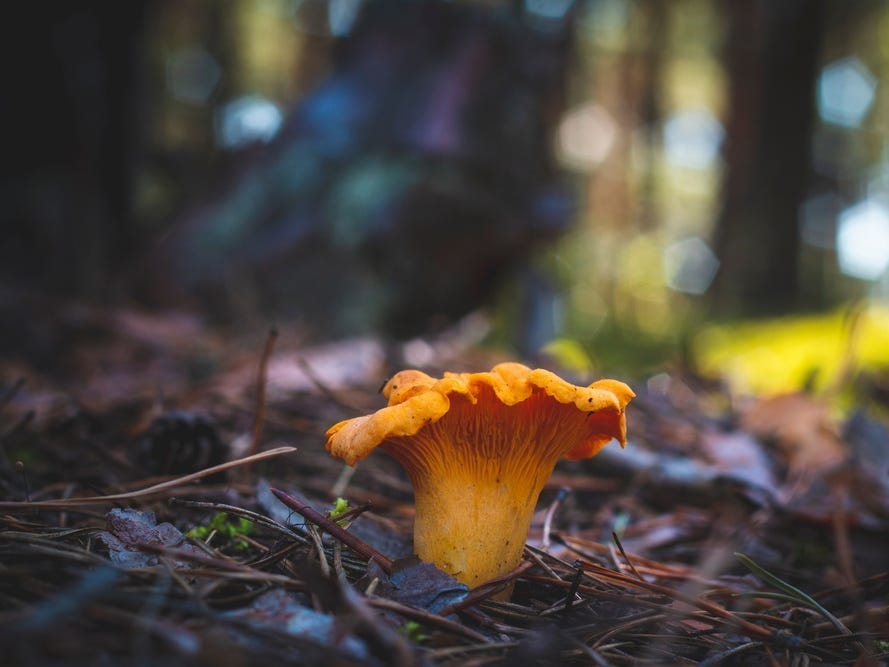
romvo/Shutterstock
"One of the main telltale signs of a chanterelle mushroom is they range from muted orange to scarlet," says Officinalis. Brill further describes them as having blunt gills that run down the stem of the mushroom. Chanterelles, which include many specific types, also hold a distinct apricot scent that tends to keep even when you cook them, giving it a sweetness that combines with the mushroom's rich and nutty flavors as well. "They're one of the tastiest mushrooms," Brill says.
Brill says this makes chanterelles perfect for classic French cuisines, as well as some soups and casseroles, while Officinalis says she likes to use hers in especially creamy dishes. She also explains that the bright color of chanterelles upholds well when cooking, which makes them a great plating mushroom. Chanterelles can most be found throughout the summer and into early fall in mixed hardwood forests, where deciduous forests meet coniferous.
Giant puffballs (Calvatia gigantea)
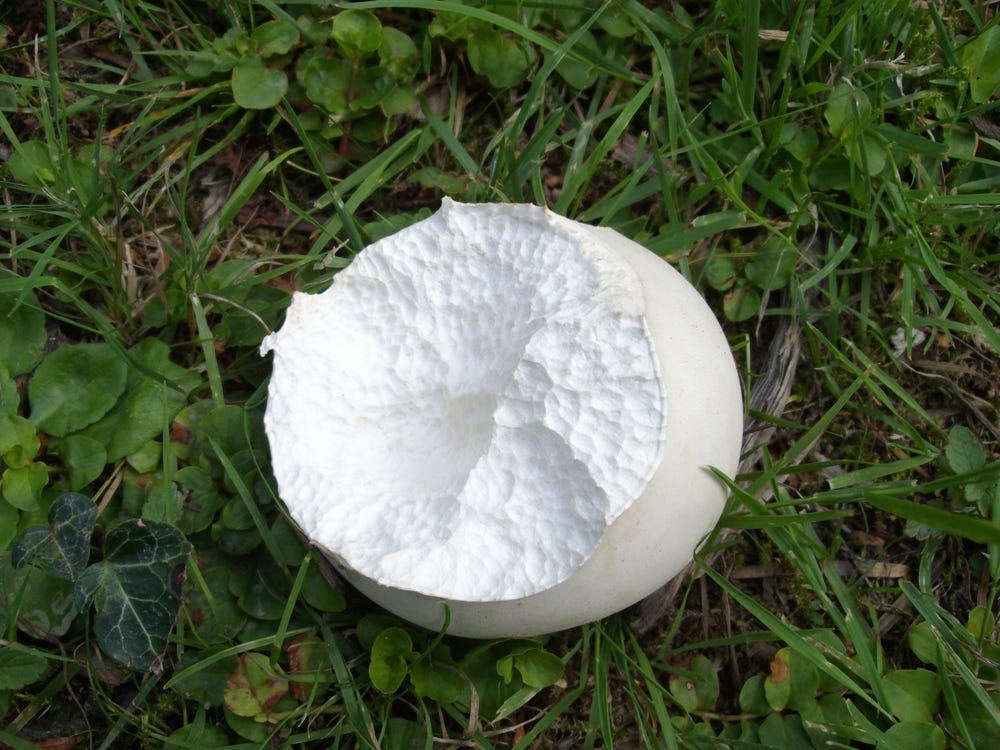
Cyanid/Shutterstock
A commonly foraged mushroom currently sweeping through TikTok, the giant puffball mushroom looks spherical and large, with some growing to the size of a beach ball. You can mostly find them in fields either on the ground or on wood during fall or early spring. Both Brill and Officinalis describe the inside of puffball mushrooms as soft and white, making it reminiscent of tofu in appearance and texture.
Given this similarity, Officinalis and Brill say you can cook with puffballs the same way you might cook tofu. Officinalis states puffballs are especially great because they tend to soak up flavors really well.
How to store mushrooms and other items
Many wild mushrooms will last about as long as the standard store-bought mushroom, and you can store them a number of ways. According to Brill, fresh mushrooms need to breathe, so be sure to store them in paper or wax paper bags. You can also cook the mushrooms and freeze them. To store the mushrooms for longer, Officinalis recommends dehydrating them with a food dehydrator or by cooking them in the oven at a low temperature.
Insider's takeaway
Four common edible mushrooms you might see when foraging are the chicken of the wood, chanterelles, morels, and giant puffballs, but there are many more to find with additional research and learning. Would-be foragers should make sure to rely on foraging guides and experts around them to begin learning, and to exercise caution and patience when identifying for certain what is or is not edible.
"I really do think of foraging as a science," Officinalis says. "I just tell people to go out and experiment. Take photos and do spore prints and learn as much as you can about your local topography. Learn from as many local mushroom hunters as you have access to."